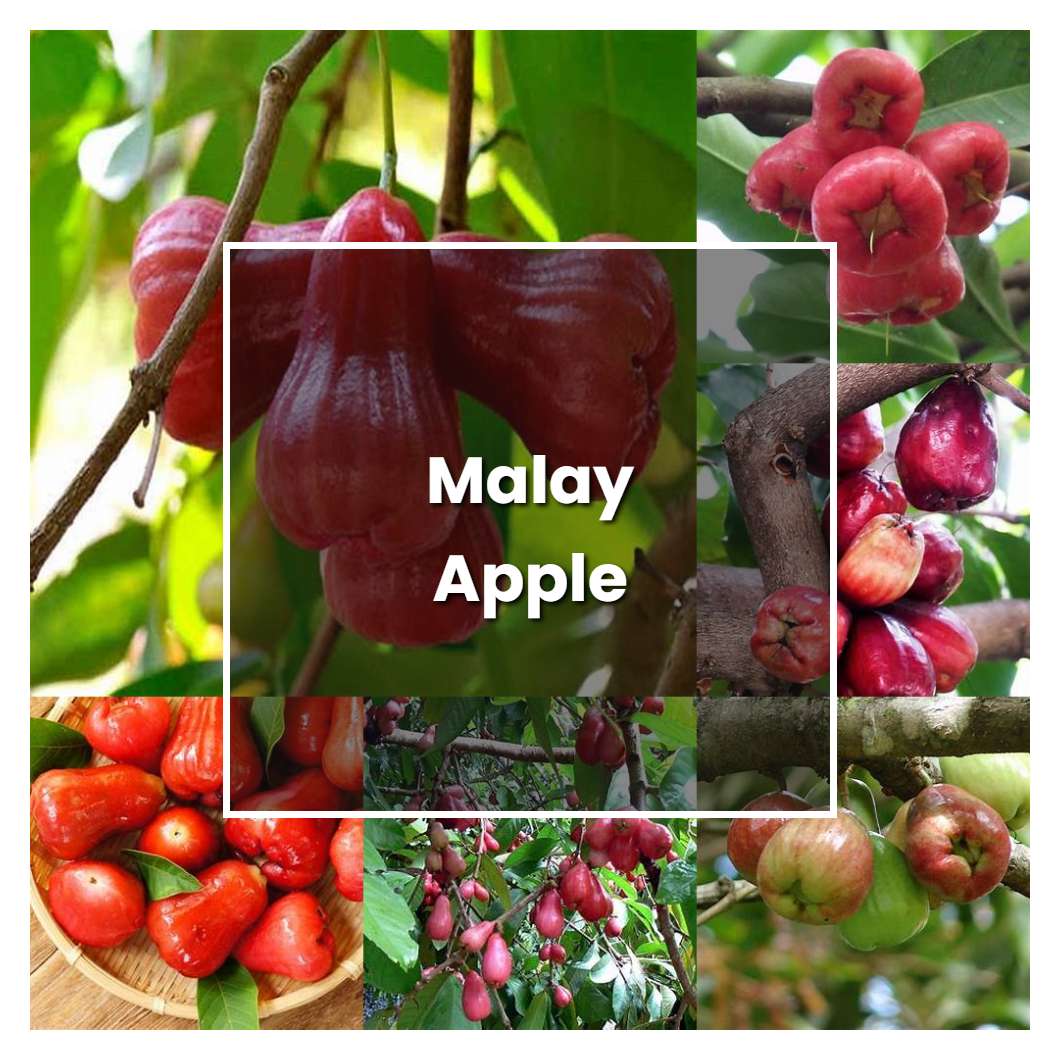Malay apple is a tropical fruit that is native to Southeast Asia. The fruit is also known as Otaheite apple, mountain apple, or pomme cythère. Malay apple is a round or oblong fruit with a smooth, waxy skin. The skin can be green, yellow, or red, and the flesh is white or pink. The fruit has a sweet, juicy flavor and is often used in desserts.

Related plant:
Himalayan Honeysuckle
About soil condition, the malay apple tree grows best on deep, well-drained, sandy loams with a high organic matter content. The tree is moderately tolerant of drought and salinity. It does not tolerate waterlogged conditions.
So, like the other fruit trees, malay apple trees need full sun to produce the sweetest, most flavorful fruit. If your tree is grown in too much shade, it will produce smaller, less tasty fruit. So if you want to get the most out of your malay apple tree, make sure it gets plenty of sun.
The temperature condition that is most suitable for the growth of the Malay apple is between 20 to 30 degrees Celsius. The tree does not tolerate cold well and may succumb to frost damage if the temperature dips below 14 degrees Celsius. Hot and dry conditions are also detrimental to the tree, causing the leaves to drop and the fruit to shrivel.
Ideal humidity condition for this plant is 60-70%. They cannot tolerate dry air for a long time and may start to lose leaves if the humidity drops below 50%. If the leaves turn brown and drop, it is a sign that the air is too dry. Grouping several plants together will help increase the humidity around the plants.
Discussing fertilizer, this type of plant needs a lot of organic matter to be added to the soil before planting. After the plant is established, a side dressing of compost should be applied every few months. A deeply buried organic Mulch will also help to keep the roots cool and moist during the hot summer months.
Pruning is an important step in malay apple cultivation. It helps to encourage new growth and keep the plant healthy. When pruning, be sure to remove any dead or damaged branches. You can also trim back any branches that are growing too close to the main trunk.
Propagation of the malay apple is typically done through seedlings, which can be grown from seed collected from the fruits. The seeds should be sown in well-drained, loose soil and kept moist until they germinate. Once the seedlings have reached a few inches in height, they can be transplanted into larger pots or into the ground.
Usually, the plant growth rate studies focus on the effects of planting density, fertilizer, irrigation and other cultural factors. However, one study in Hawaii found that when trees were grown in full sun, they produced more fruit than those grown in partial shade.
Common problems for this kind of plant plants are pests and diseases. Pests such as caterpillars, whiteflies and aphids can attack the leaves and fruits of the plant, causing damage. Diseases such as powdery mildew and anthracnose can also affect the plant, causing leaves to turn yellow or brown and fruits to rot.
Source:
Apple Language Centre in Malaysia. Study in Our Language
Vegetative Propagation of Five Local Cultivars of Malay Apple
Mayapple, Podophyllum peltatum Wisconsin Horticulture
